📣 For more lifestyle news, click here to join our WhatsApp Channel and also follow us on Instagram
The Back Burner: The Gujarati Padwali Rotli is the most delicate you’ll ever eat
Made with a unique technique of layering, padwali rotli is traditionally eaten with aam ras.
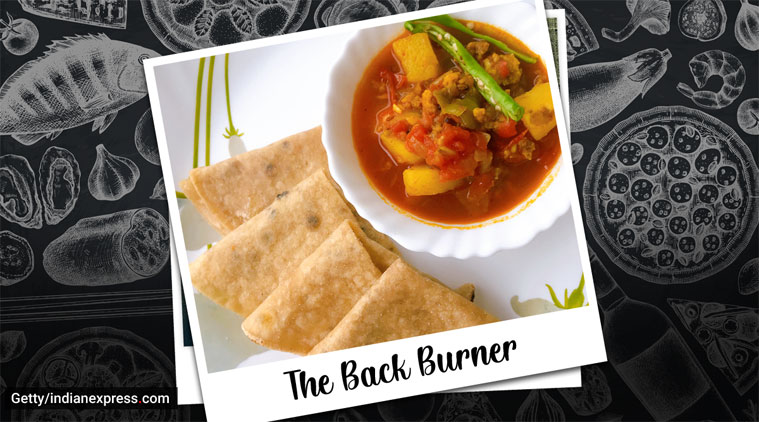 Padwali rotlis with aloo wadiyan. (Photo: Pooja Pillai; designed by Gargi Singh)
Padwali rotlis with aloo wadiyan. (Photo: Pooja Pillai; designed by Gargi Singh)
There’s enough bandwidth spent on describing the delicious smell of hot, fresh rotis (or chapatis or phulkas), so I’m not going to waste any time on that. We’ll take it as read that ordinary, everyday Indian flatbreads, fresh off the tawa and especially when smeared with ghee, smell divine. OK? OK.
We now come to my favourite such flatbread: the Gujarati Padwali Rotli. Traditionally, it’s eaten with aam ras, but life is short and the lockdown is long, so, having no good mangoes (I can’t have any more safeda), I just went ahead and had these rotlis with aloo wadiyan.
These rotlis get their name from the unique cooking technique, wherein two rotis are rolled out together, one layered on top of the other (“pad” in Gujarati means “layer”). The layers separate as they heat on the tawa, and you end up with two delicate, translucent rotlis that, quite frankly, can be eaten in two bites each. So, before we proceed, a warning: you might overeat, but that’s only because these rotlis will disappear down your gullet all too quickly.
ALSO READ | The Back Burner: Try Onion Rava Dosa for a quick breakfast
Ingredients:
2 cups – Whole wheat flour (this does not include the flour you set aside for dusting)
Lukewarm water, as needed
Any neutral-flavoured oil, as needed
Ghee, as needed
Method:
*Mix together the flour, water and 1-2 tsp of oil to make a smooth, firm dough. Coat it in a little oil and let it rest for 10-15 minutes.
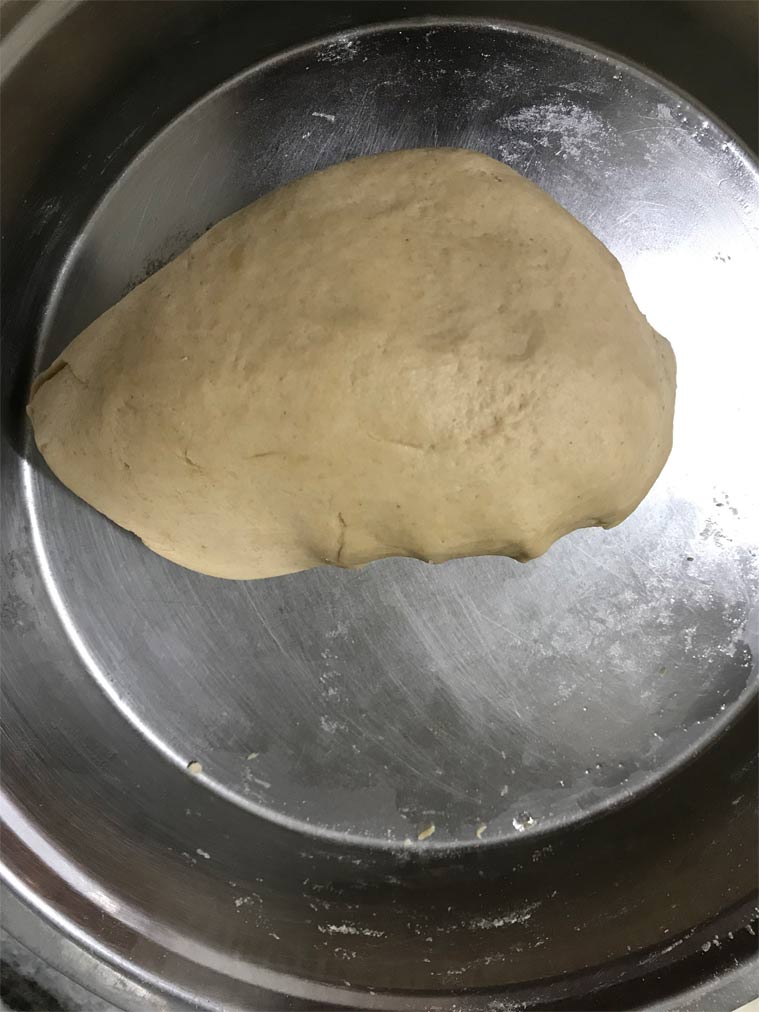 Make sure the dough is smooth, then lightly coat it in oil and let it rest. (Photo: Pooja Pillai)
Make sure the dough is smooth, then lightly coat it in oil and let it rest. (Photo: Pooja Pillai)
*Break off two similar sized pieces of dough and smoothen them into balls that are roughly the size of ordinary nimboos. Roll each one out separately into small discs (don’t make them too thin). Cover the surface of one disc with oil and sprinkle some of the dusting flour.
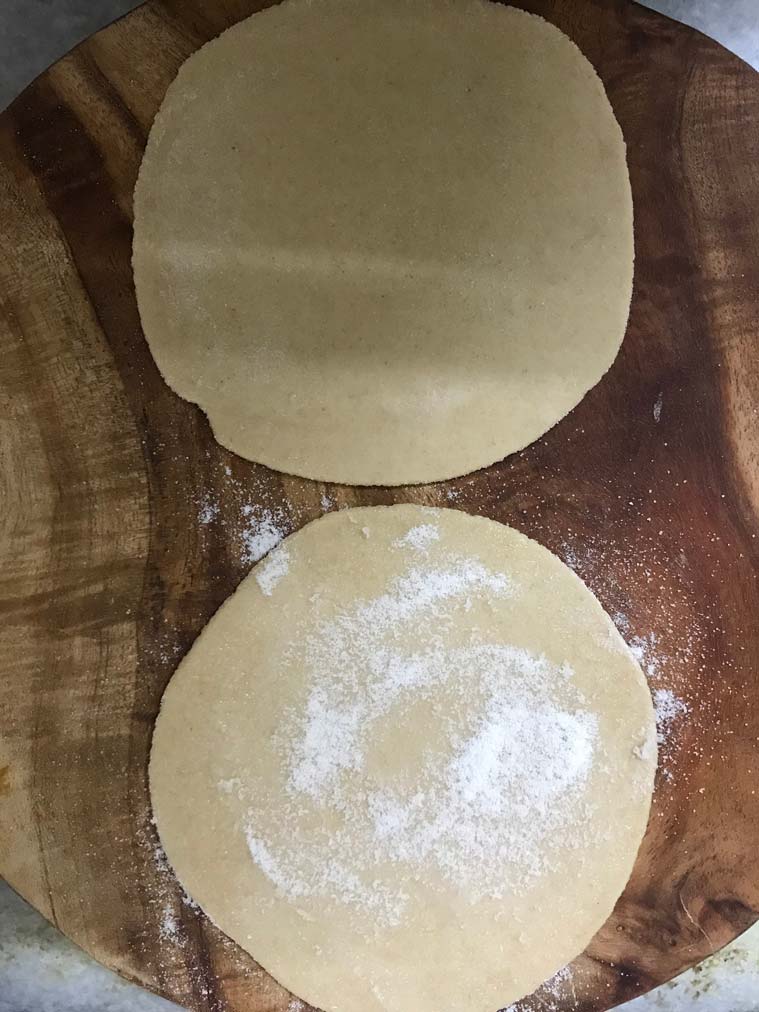 Roll out two small discs, covering the surface of one with oil, followed by dusting flour. (Photo: Pooja Pillai)
Roll out two small discs, covering the surface of one with oil, followed by dusting flour. (Photo: Pooja Pillai)
*Then place the other disc on top of this and roll both out together into a thin rotli, as shown in the photo. Make it as thin as you can, and use a little dusting flour to keep it from sticking (my favourite hack, learnt from my mother, is to use rice flour to dust rotis, because it’s more hygroscopic than wheat flour. If you use too much, though, it will dry out your dough, so be careful).
 Place the ungreased disc over the other, so that there’s a thin layer of oil and flour between the two, and roll them out together. (Photo: Pooja Pillai)
Place the ungreased disc over the other, so that there’s a thin layer of oil and flour between the two, and roll them out together. (Photo: Pooja Pillai)
*It may look like the two layers have flattened into one, but don’t worry. If you’ve covered that one disc with oil properly and sprinkled enough dusting flour, they should separate.
 You may not always be able to see two discrete layers, but that’s alright, as long as you’ve oiled and floured properly. (Photo: Pooja Pillai)
You may not always be able to see two discrete layers, but that’s alright, as long as you’ve oiled and floured properly. (Photo: Pooja Pillai)
*Make sure your tawa is very hot before you place the rotli on it. You want each side to cook quickly, because if the tawa isn’t hot enough and it takes a while for the tell-tale blisters to form on the rotli, it will get brittle like papad. So as soon as blisters form on one side, flip the rotli and cook the other side. As it cooks, the layers will separate.
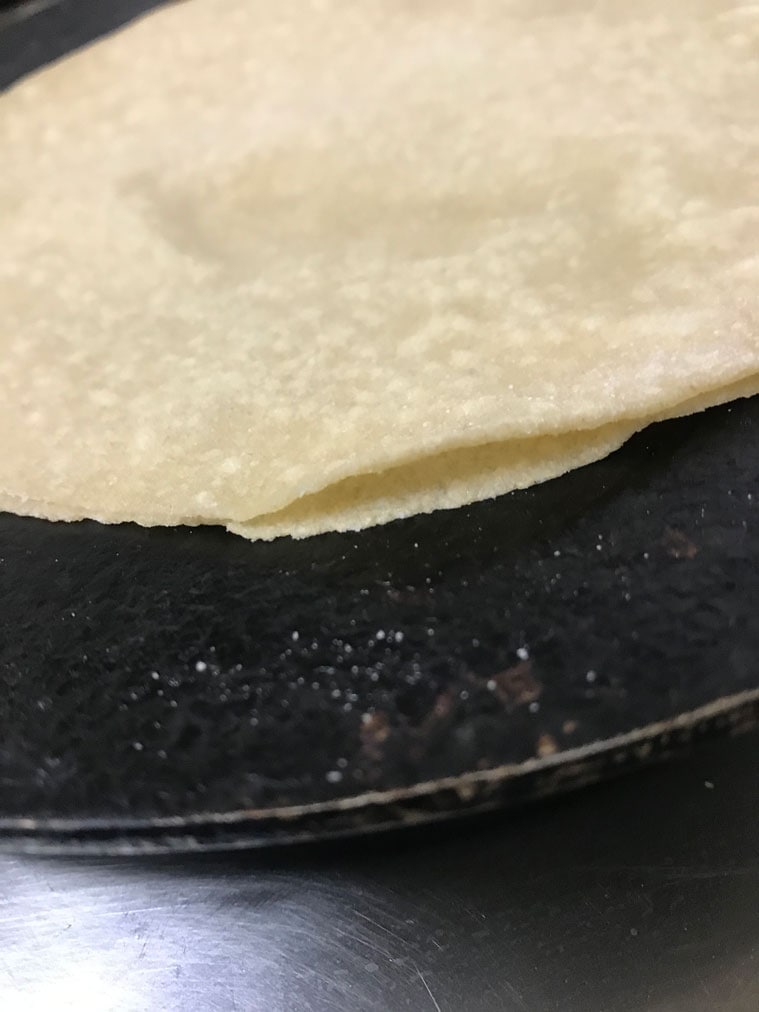 The layers start to separate, as the rotli cooks on the hot tawa. (Photo: Pooja Pillai)
The layers start to separate, as the rotli cooks on the hot tawa. (Photo: Pooja Pillai)
*Take the rotli off the tawa and carefully, making sure not to burn your fingers with the escaping steam, peel the two layers apart. Spread ghee (liberally) on each blistered side.
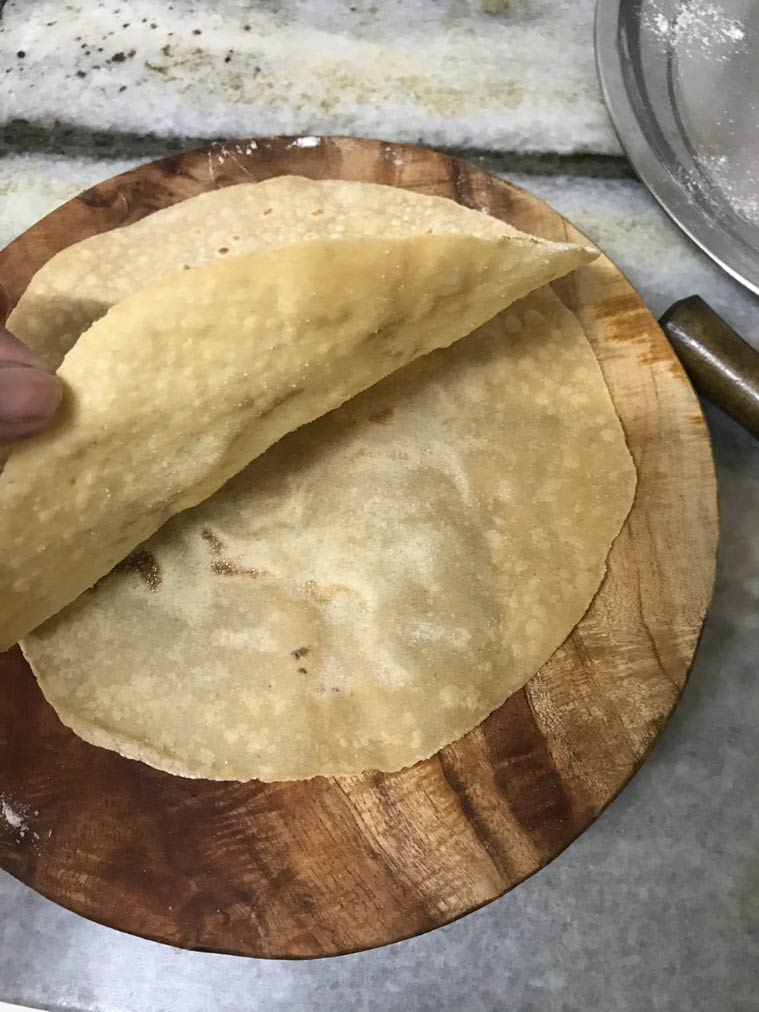 Peel the two layers apart carefully, and smear ghee on the blistered side of each. (Photo: Pooja Pillai)
Peel the two layers apart carefully, and smear ghee on the blistered side of each. (Photo: Pooja Pillai)
*This isn’t one of those rotis that can be made well ahead of time, because, given how thin it is, the layers start to dry out very quickly. So eat as soon as they’re made.
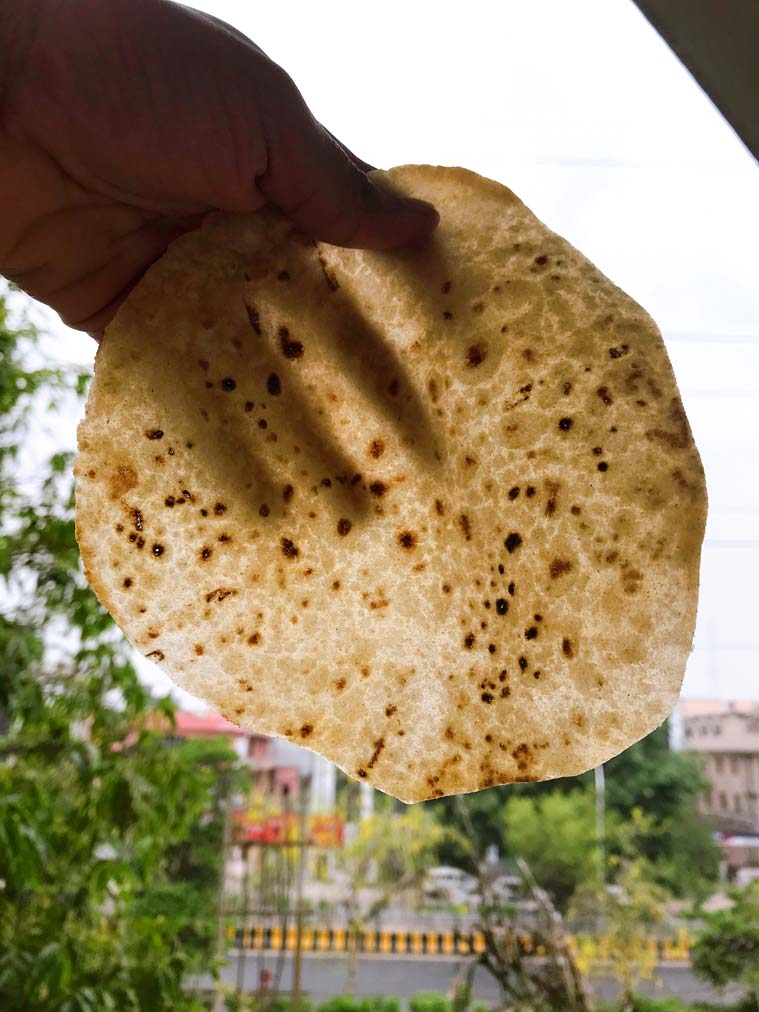 Each layer of a well-made padwali rotli will be soft and translucent. (Photo: Pooja Pillai)
Each layer of a well-made padwali rotli will be soft and translucent. (Photo: Pooja Pillai)
*Serve with aam ras, or any subzi of choice (why be a stick-in-the-mud at a time like this?)
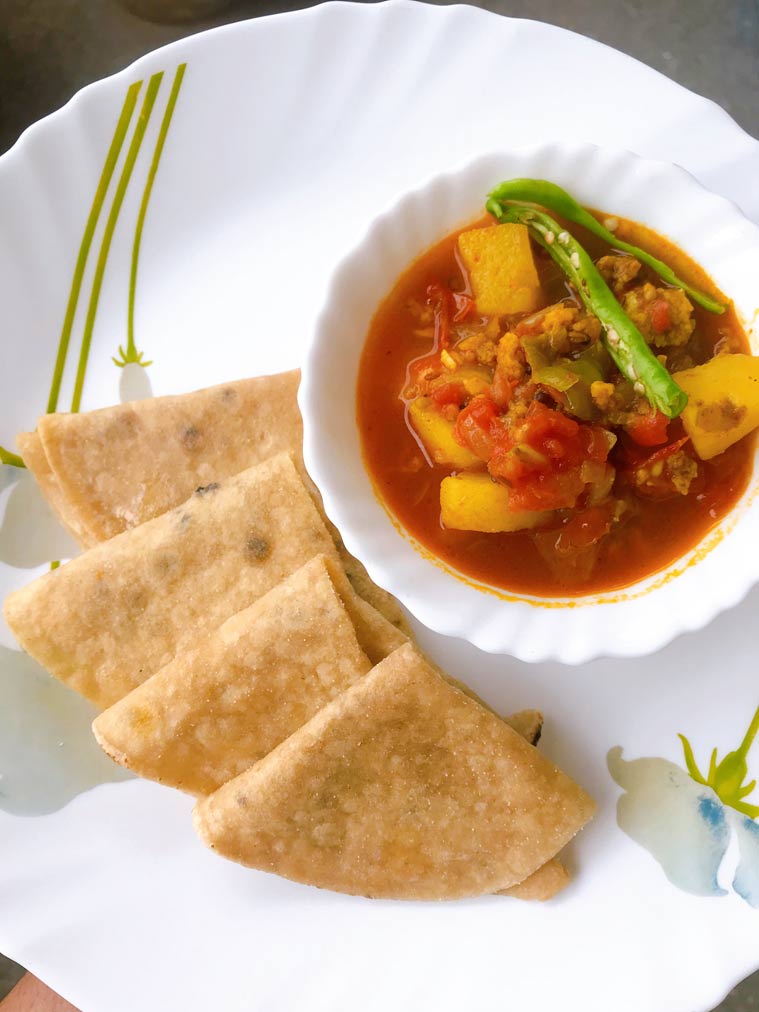 Padwali rotlis should be had hot & fresh, because they get dry and brittle as they get cold. (Photo: Pooja Pillai)
Padwali rotlis should be had hot & fresh, because they get dry and brittle as they get cold. (Photo: Pooja Pillai)
[The Back Burner is a biweekly blog that will talk about all things food (with recipes, of course)]
📣 For more lifestyle news, click here to join our WhatsApp Channel and also follow us on Instagram





- 01
- 02
- 03
- 04
- 05






















